Mel and Sue
and
The Great Briton Baking Competition
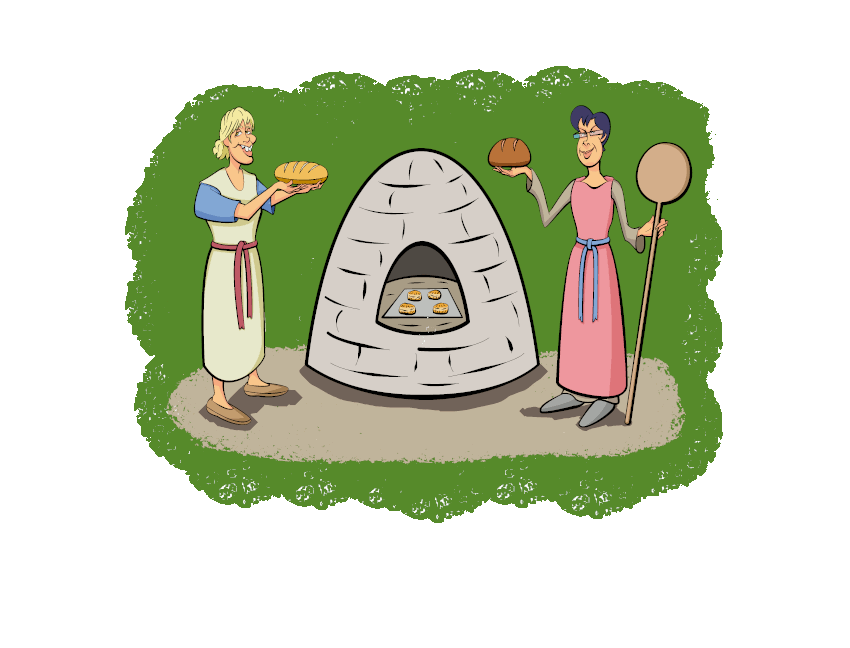
(Click on the image to
zoom in and out.)
Actually in Great Britain the popular television show is called The Great British Bake Off. In the former colonies it's The Great British Baking Show.1
But the title above is a good summary of the show's format. Various guests try their baking skills and then the judges select the Best of the Baking. Mel and Sue were hosts and presenters for the first seven years of the show from 2010 to 2016.
Footnote
In America another company had dibs on the phrase "Bake Off". Hence the different names.
Like many of the best English comedians, Mel Giedroyc2 and Sue Perkins have an Oxbridge background (they both went to Cambridge). After they left university,3 they appeared in a number of TV comedy shows before they took on presenting the British Bake Off/British Baking Show/Briton Competition.
Footnote
Mel's last name is pronounced GED-roytch and is of Polish and Lithuanian derivation. Mel is, of course, short for Melanie.
Footnote
Some of the more curmudgeonly of the non-natives of the British Isles sometimes grump that the British like to leave off the definite and indefinite articles. So in England you go to university, rather than a university. You might spend some time in hospital rather than in the hospital. You also go on holiday (vacation) than go on a holiday.
Of course, such phraseology is also common in America. Americans also go on vacation (holiday), and then they go home. They also go to school and to college, and after college they go to graduation. So it's just that the British have a few more such phrases with (the) articular omission.
The word Briton can be used to refer to a citizen of the British Isles and it can indeed be taken as a synonym to British. But historically a Briton was one of the indigenous inhabitants before the migration of the Angles and the Saxons and the Jutes from Germany. The Britons spoke a variety of Celtic dialects rather than what we call Anglo-Saxon or Old English.
It was the Britons, of course, who first started British Baking. Baking is one of the earliest practical arts and many sources place its origins around 10,000 B.C. However, more recently a piece of ancient bread was discovered that was baked around 14,000 BC. This was even before the Neolithic Age and was a time before people began cultivating their own grain.
In all likelihood baked goods were less invented than discovered. Archeologist have established that the earliest cereal food was prepared from cracked grains that were heated in water to make porridge. So it's easy to see that as the porridge was dished from the kettle into the serving bowls, some would fall onto the hot stones of the hearth. After the blobs sat for a while they would bake into small loaves of coarse grained bread just about the right size for a single serving. Eaten hot off the griddle, this proto-bread could be surprisingly tasty. The loafs could also be carried around and eaten without the cumbersome accoutrements of a bowl and spoon.
The earliest grains were usually barley, rye, spelt, and emmer, rather than wheat. Modern wheat was ultimately developed from emmer after it became a cultivated grain. The earliest wheat farming probably began in the Middle East along what is known as the Fertile Crescent. Wheat is more easily threshed than the older grains and has higher yields (bushels of threshed product per acre) but is more susceptible to loss from insects and drought. But the biggest plus is that wheat produces a light and mild tasting bread that has wide appeal.
Of course, the type and quality of bread depends not just on the type of grain, but on the fineness of the flour. The first flour was prepared simply by pounding the grain with a rock. Naturally such bread would be quite coarse with the consistency of polenta.

Saddle Quern
The next stage was to grind the grain in hand mills called querns. The first querns were made from a stone that was hollowed out into a tray. The grain was placed in the tray and a second roughly cylindrical stone was rubbed or rolled back and forth to crush the grain. These saddle querns were used in Ancient Egypt for much of its long history. In England saddle querns have been found associated with Neolithic settlements and in fact are still used in some regions of the world today.
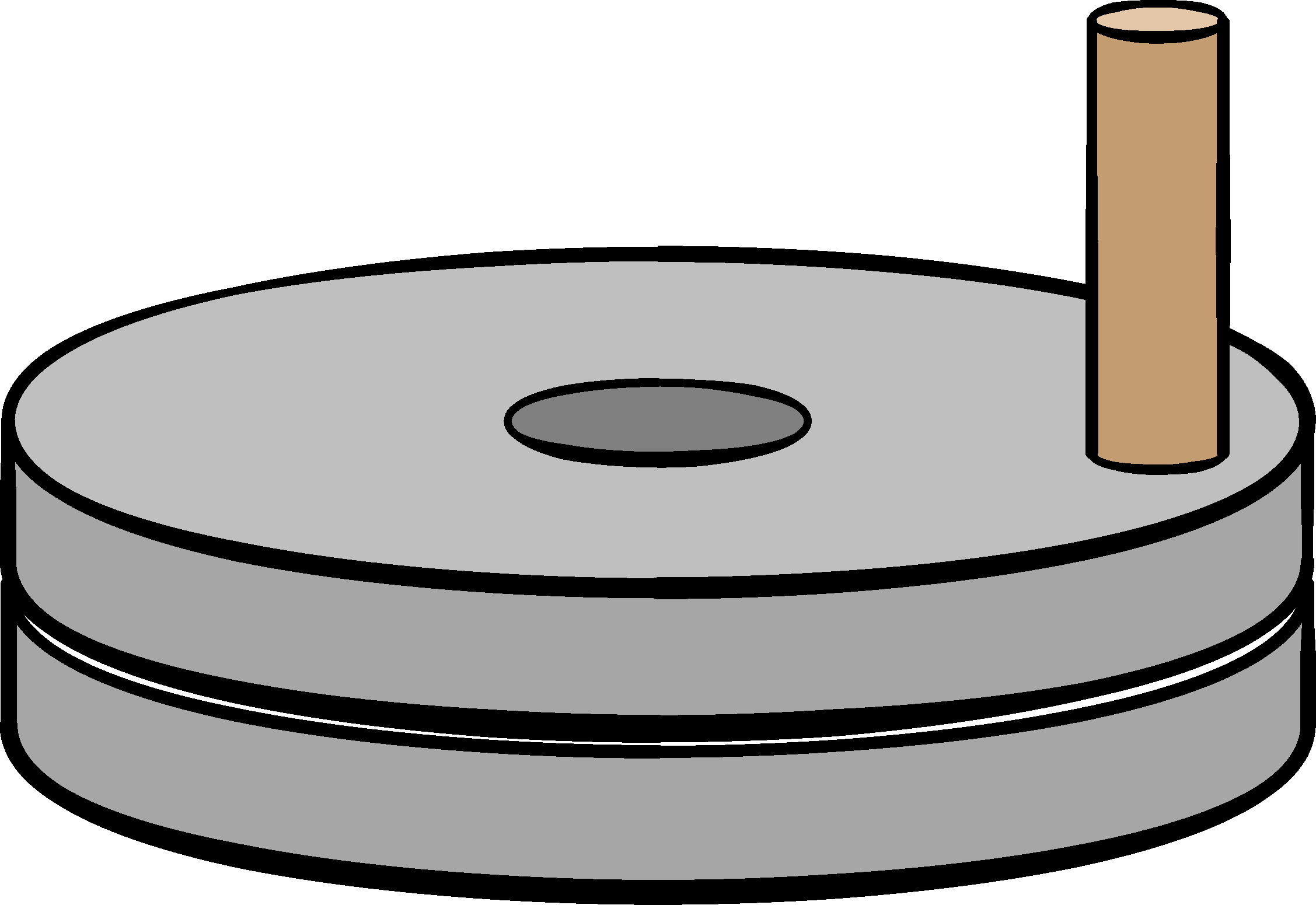
Rotary Quern
The next step up was the rotary quern which can be considered the first true mill. Constructed from two stone discs, rotary querns were fashioned to allow the two stones to fit together without slipping. The top disc could then be rotated by means of an attached handle while the bottom disc remained stationary. A hole in the center of the top stone was filled with grain and by turning the top stone the grains were ground into particles which moved between the stones to exit from the edges. Designs changed over the centuries and the top stone was made taller so it could hold more grain. Naturally the grinding surfaces worked best if they were rough or serrated.
Generally the harder the stones the better the quern. Basalt, granite, and quartzite were favored and a basalt quern was actually considered a prestige household item.
But querns were also made from softer stones like limestone and - surprisingly - sandstone. Sandstone saddle querns have been found in Ancient Egypt and since the grinding stone and the saddle come into direct contact the grinding produces grit which together with the ubiquitous blowing sand produced terrible dental problems for the ancient inhabitants of the Nile valley.
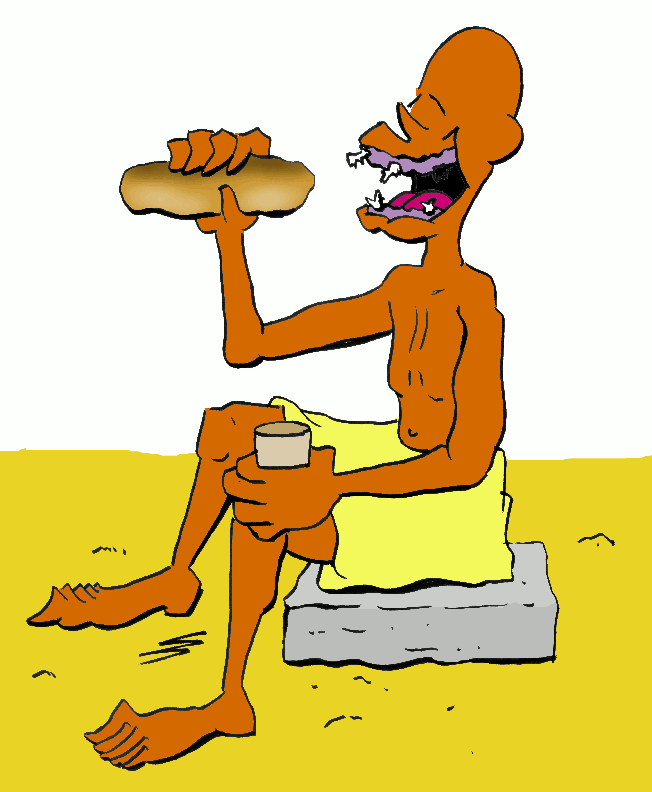
In the Nile Valley
Since rotary querns tended to be built of the harder stones, the problem with grit was less and also the grain itself helped keep the stones from direct contact. As technology progressed, mills were developed where there was always a small separation between the two wheels and the grinding came from stone against grain and grain against grain. Today's mills - whether industrial or kitchen size - permit the space to be adjusted so the stones never touch.
To make more flour quicker, the rotary querns got bigger and bigger until they could no longer be turned simply by hand. Draft animals - usually donkeys - were harnessed to the querns and led in circles around the mill. Designs also changed and rolling mills became common where a heavy stone cylinder rolled over and crushed the grain. Remains of such mills - and the donkeys - have been found in the ancient city of Pompeii.
To avoid the middle man, bakers often ground their own grain in the back yards of their shops. But as civilization progressed - as they called it - and the demand for flour increased, mills got too big even to be powered by donkeys. So came the familiar water mills built next to streams and rivers where the flowing water rotated the wheels which drove the millstones. Millstones several feet across could be driven by water and the millers who did nothing but grind grain for a living became necessary members of the communities.
The early breads that were prepared simply by mixing grain with water tended to produce dense loafs which could be an excellent dental exercise. In Western civilizations, though, bread is often synonymous with leavened bread. Leavened bread is made from dough that rises before or during baking to make lighter, fluffier, and chewier breads.
Leavened breads were first discovered by making the dough and not getting around to baking it just yet. So the dough sat around and it began to ferment. That is the dough absorbed wild yeast from the environment that gobbled up carbohydrates and produced carbon dioxide bubbles that made the dough rise. Sitting around the dough also absorbed lactic acid forming bacteria that imparted a slight sour taste and hence the bread became known as sourdough bread. It was found that if you kept a bit of the dough, you could just add it to the next batch and not have to wait around for the yeast and bacteria to find the dough on their own.
But leavened breads really took off with the introduction of brewing. A baker would have been making some bread but didn't have water on hand and so poured in a bit of beer.4 The yeast would begin growing and emit carbon dioxide making the dough rise. It was later discovered that if you just added a bit of the foam from the fermenting beer to the dough, there's enough yeast to make the bread rise. Today there are other non-biological "leavening agents" like baking soda, baking powder, and steam (produced from good old fashioned water). Each produces a particular consistency depending on the type of bread you want.
Footnote
Even today there are beer breads. Today though the yeast is generally removed from the beer by filtration and so you have to add the yeast just as when making regular bread. The beer is used to provide additional flavor and beer breads tend to be darker and heavier than many other breads.
By the Britonian Age, a variety of breads had become dietary staples. Instead of just cereals you could toss in bits of fruit and even add honey to make sweetbreads. Milling and sifting was capable of producing fine flours with particle diameters of less than 100 microns (1/2500 inch). With the various leavening agents and the different grades of flour, bread became differentiated into cakes, biscuits, scones, buns, crumpets, muffins, bagels, pancakes, scones, pretzels, and pizza.
Fairly early on the baking process moved from the home hearth to dedicated ovens which were often outdoors. Specialists began taking over and if you lived in the towns and cities instead of making your own bread you would go to the baker. As the Middle Ages rolled in, bakers and millers organized into guilds and in some cities they managed to get ordinances passed that forbade people from grinding their own grain. You could even get fined just for owning a quern. Farm people, though, kept making their own bread, and this was a practice that continued well into the 20th Century and in some traditional families persists today.
The biggest irony to arise from the millennia of baking is that the "store-bought white bread" was once considered the height of the baking art and haut cuisine but is now often disparaged as tasteless and insipid and lacking in nutrition. Whole, multi-grained, and even "ancient grain" breads are seen as elegant, tasty, and healthy. So what was once considered food affordable for the lower income families became trendy high-falutin' comestibles for the jet-set and with (and to the consternation of many) a commensurate increase in price.
Mel and Sue have appeared together in many other TV shows and movies, both as a team and individually. Mel has starred in shows as varied as The Sound of Music (2015, ITV) and Horrible Histories (2017, CBBC), and Sue was co-host with Giles Coren of the educational and entertaining Supersizers Eat and Supersizers Go series. On these shows she and Giles took the part of inhabitants of different countries throughout history and tried out the food of the times and places.
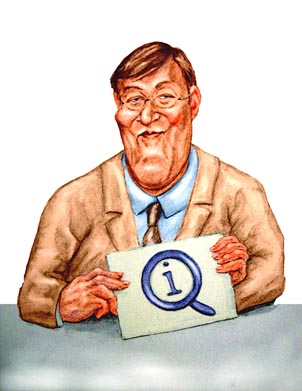
Stephen Fry
He misspoke.
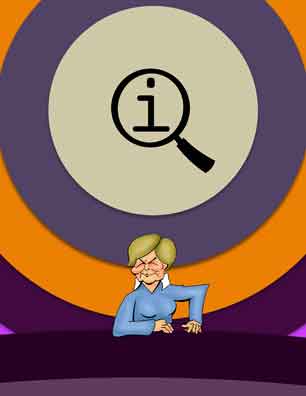
Sandi
She assumed the helm.